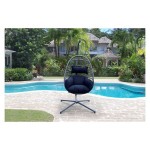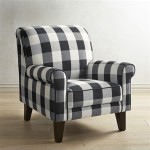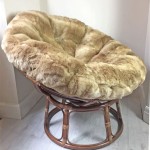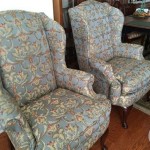The Comprehensive Guide to 12-Seater Dining Tables with Chairs
A 12-seater dining table with chairs represents a significant investment in both space and lifestyle. It signifies an intention to host large gatherings, fostering a sense of community and connection. This expansive dining setup is not merely a functional piece of furniture; it transforms a room into a central hub for celebrations, family meals, and social interactions. Choosing the right 12-seater dining table and chairs requires careful consideration of factors ranging from room size and style to material durability and overall aesthetic.
The sheer size of a 12-seater dining set necessitates a thorough evaluation of the available space. Cramping such a large table into an inadequate room will result in discomfort and hinder movement. Ideally, there should be at least 36 inches of clearance between the edge of the table and any walls or other furniture. This allows for comfortable seating and unimpeded passage around the table. Before embarking on the selection process, accurately measure the dining area and consider any architectural features that might impact placement, such as doorways, windows, and built-in cabinetry.
Moreover, the design and style of the dining table and chairs should complement the existing décor of the room and the overall aesthetic of the home. A modern, minimalist home would benefit from a table with clean lines and a neutral color palette, while a traditional setting might call for a more ornate design with rich wood tones and upholstered chairs. The choice of materials also plays a crucial role in determining the longevity and maintenance requirements of the dining set.
Space and Layout Considerations
Before purchasing a 12-seater dining table, it is paramount to assess the dimensions of the dining room. Consider the shape of the room and how it will influence the placement of the table. Rectangular tables are typically the most common and versatile, fitting well into elongated rooms. However, square or round tables might be better suited for square spaces, promoting a sense of intimacy and facilitating conversation amongst all diners. The shape of the table also affects the ease of serving and reaching dishes.
Beyond the table’s dimensions, evaluate the placement of other furniture in the dining room, such as sideboards, buffets, and display cabinets. These pieces should be positioned in a way that does not obstruct the flow of traffic or create a cluttered appearance. The lighting in the room is another crucial factor to consider. Ensure that the dining table is adequately illuminated, either through natural light from windows or through strategically placed light fixtures. A chandelier or pendant lights suspended above the table can create a focal point and enhance the dining experience.
The accessibility of the dining room from the kitchen and other areas of the house is also significant. Ideally, the dining room should be easily accessible from the kitchen to facilitate serving meals. Consider the distance between the kitchen and the dining room and ensure that it is manageable, especially when carrying large platters of food. If the dining room is used for other purposes besides dining, such as a home office or study area, ensure that the table can accommodate these activities without feeling cramped or uncomfortable.
Material Selection and Durability
The choice of materials for a 12-seater dining table significantly impacts its durability, aesthetics, and maintenance requirements. Solid wood is a popular choice for its timeless appeal and inherent strength. Hardwoods like oak, maple, and walnut are particularly durable and resistant to scratches and dents. However, solid wood tables can be more expensive than those made from other materials and may require regular maintenance, such as polishing and oiling. The finish applied to the wood also influences its durability and resistance to stains and water damage.
Veneered wood offers a more affordable alternative to solid wood, providing a similar aesthetic appearance at a lower cost. Veneer consists of a thin layer of hardwood adhered to a core of less expensive material, such as particleboard or MDF. While veneered tables can be durable, they are more susceptible to damage from scratches and moisture than solid wood tables. The quality of the veneer and the underlying core material are crucial factors in determining the longevity of a veneered table.
Glass-topped tables offer a contemporary and elegant look, creating a sense of spaciousness and lightness. Tempered glass is a durable and safe option, resistant to shattering and heat. However, glass tables can be prone to fingerprints and smudges and may require frequent cleaning. The base of a glass-topped table is typically made from metal or wood, and the choice of material should complement the overall style of the dining room. Metal bases offer a sleek and modern look, while wooden bases provide warmth and texture.
Metal dining tables, typically crafted from stainless steel or wrought iron, offer a modern and industrial aesthetic. Metal is a highly durable and low-maintenance material, resistant to scratches, dents, and moisture. However, metal tables can be cold to the touch and may require the use of placemats to prevent dishes from sliding. The finish of the metal can also impact its appearance, with brushed or polished finishes offering different levels of shine and sophistication.
The materials used for the chairs are equally important. Wooden chairs offer a classic and timeless appeal, while upholstered chairs provide added comfort. The fabric used for upholstery should be durable and stain-resistant, and the cushioning should be supportive and comfortable. Metal chairs are a durable and low-maintenance option, but they may require the use of cushions for added comfort. Consider the overall weight of the chairs and their ease of movement when making a selection.
Style and Aesthetic Considerations
The style of a 12-seater dining table and chairs should align with the overall aesthetic of the home and reflect the homeowner’s personal taste. A formal dining room might call for a traditional dining set with ornate details and rich wood tones, while a casual dining area might benefit from a more relaxed and contemporary style. Consider the architectural style of the home and the existing furniture in the dining room when making a selection.
Traditional dining sets typically feature ornate carvings, intricate details, and rich wood finishes. These sets often include upholstered chairs with detailed backs and comfortable cushions. The table may have pedestal legs or cabriole legs, adding to the overall sense of formality. Traditional dining sets are well-suited for formal dining rooms and homes with a classic or Victorian aesthetic.
Modern dining sets emphasize clean lines, simple shapes, and a minimalist aesthetic. These sets often feature tables with glass tops or metal bases and chairs with sleek designs and neutral colors. Modern dining sets are well-suited for contemporary homes and apartments and can create a sense of spaciousness and lightness. The materials used in modern dining sets are often durable and low-maintenance, such as stainless steel, glass, and engineered wood.
Rustic dining sets evoke a sense of warmth, comfort, and natural beauty. These sets often feature tables made from reclaimed wood or rough-hewn planks and chairs with woven seats or distressed finishes. Rustic dining sets are well-suited for country homes, cabins, and homes with a farmhouse aesthetic. The materials used in rustic dining sets are often durable and natural, such as wood, stone, and iron.
Eclectic dining sets combine elements from different styles and periods, creating a unique and personalized look. These sets might feature a vintage table paired with modern chairs or a traditional table with brightly colored accents. Eclectic dining sets allow for creativity and self-expression and can be a great way to showcase individual style. The key to creating a successful eclectic dining set is to ensure that the different elements complement each other and create a cohesive overall look.
Choosing the right color palette for the dining set is also crucial. Neutral colors, such as white, beige, and gray, are versatile and can be easily incorporated into any décor. Bold colors, such as red, blue, and green, can add personality and visual interest to the dining room. Consider the color of the walls, flooring, and other furniture in the room when making a color selection.
The size and shape of the chairs should also be considered. High-back chairs can create a sense of formality and elegance, while low-back chairs offer a more casual and relaxed feel. Armchairs provide added comfort and support, while armless chairs are more compact and space-saving. The shape of the chair seat should also be comfortable for extended periods of sitting.
Ultimately, selecting a 12-seater dining table with chairs is a multifaceted decision that requires careful planning and consideration. By assessing the available space, evaluating material options, and exploring different styles, one can choose a dining set that not only meets their functional needs but also enhances the aesthetic appeal of their home, creating a welcoming and inviting space for gatherings and celebrations.

Modern Pioneer Solid Wood Square Dining Room Set For 12

3m Concrete Dining Table With Steel Base 12 Seaterindoor Or Outdoor Dinignt Able Etsy

Innovative Contemporary 12 Seater Dining Table Photo Gallery Remodeling

Extra Large 6ft Square Rustic Dining Table With Trestle Style Cross Leg Base Handmade From Solid Wood 12 Seater Etsy

12 Seat Dining Tables Top

12 Seater Marble Dining Table Top Royal Luxury Wooden Carving At

Oe Fashion Contemporary Wood Color Water Based Paint Surface 8 Seater 12 Solid Dining Table Sets Buy Set

Baluster Square Dining Table James

Solid Wood Dining Table Sets Sierra Living Concepts

Large 12 Seater Dining Table Zest Seat Rectangular Set With Fire Pit Garden







